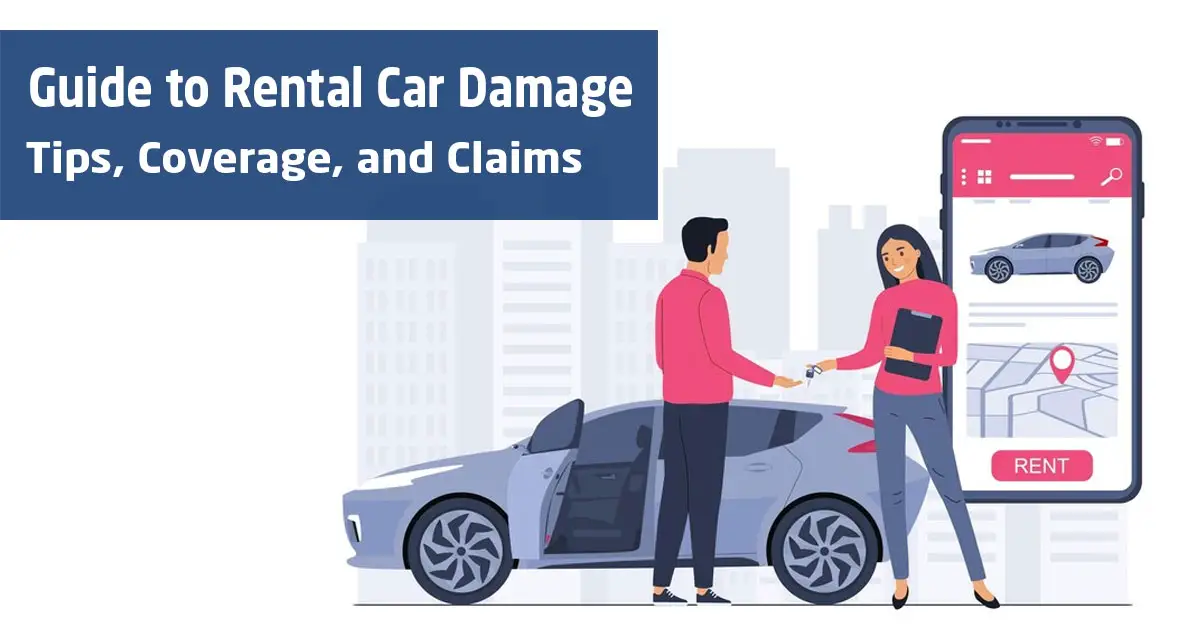Renting a car for your vacation or business trip should be seamless, and the last thing you want to encounter is dealing with car damage. It can quickly sour the rental experience. In this comprehensive guide, we will delve into car damage, provide strategies to protect yourself, and offer guidance on handling such situations effectively.
Understanding Rental Car Damage Waivers
When opting to rent a car, you are often presented with the option to purchase a car damage waiver. This waiver, also known as a collision damage waiver (CDW), serves as a safeguard against bearing the financial burden in the event of any damage to the rented vehicle. It establishes an agreement between you and the rental car company wherein they waive their right to seek payment for repairs or replacement of the car, provided you comply with the terms of the waiver.
Decoding Collision Damage Waiver for Rental Cars
A collision damage waiver (CDW) is a type of vehicle protection that covers the costs of repairs or replacement if the rental car sustains damage due to a collision, theft, or vandalism. It’s important to note that a CDW is not insurance but a contractual agreement between you and the rental car provider. Understanding the terms of the CDW before signing any rental agreements is crucial.
Exploring the Loss Damage Waiver for Rental Cars
In addition to the collision damage waiver, rental car companies may offer a loss damage waiver (LDW). The LDW extends protection for damages beyond what the CDW covers, such as damage from fire, flood, or falling objects. Similar to the CDW, the LDW is a contractual agreement and not insurance. Reviewing the terms and conditions of the LDW before making a decision is essential.
Coverage of Rental Car Damage
The coverage provided by rental car damage waivers may vary, and it’s important to understand what is included before declining or accepting it. Generally, these waivers encompass costs related to repairing or replacing the rented vehicle in case of damage or theft. However, exceptions such as damage from reckless driving or driving on unpaved roads may apply. Reviewing the waiver thoroughly ensures understanding of its coverage.
Tips for Preventing Rental Car Damage
While having a rental car damage waiver provides peace of mind, it’s advisable to avoid damage to the rental car altogether. Here are some tips to prevent car damage:
- Drive defensively to minimize the risk of accidents.
- Park in safe areas to avoid dings, scratches, or theft.
- Avoid high-crime areas or places with higher risk of damage.
- Adhere to traffic rules to prevent collisions.
- Conduct a thorough inspection of the car before driving to identify any existing damage.
Following these guidelines significantly reduces the likelihood of car damage and potential unexpected expenses.
Handling Rental Car Damage Incidents
In the event of rental car damage, prompt action is crucial. Here’s what to do if the rental car sustains damage:
- Assess the damage by documenting it with photos.
- Notify the rental car company and follow their instructions.
- Complete any required paperwork or incident reports.
- Inform your insurance company if you have auto insurance.
- Follow up with the rental car company to ensure a smooth claims process.
Prompt reporting and adherence to procedures facilitate a smoother resolution to the situation.
Exploring Rental Car Damage Insurance Options
In addition to car damage waivers, exploring other insurance alternatives is advisable. Your personal auto insurance or credit card may offer coverage for rental car damage. Reviewing your insurance policies and consulting with your provider helps in making an informed decision.
Filing a Rental Car Damage Claim
Should you need to file a claim for rental car damage, follow these steps:
- Gather all necessary documentation, including photos and rental agreements.
- Notify the rental car company and provide documentation.
- Cooperate with the rental car company throughout the claims process.
- Maintain records of all interactions and communications.
- Follow up with the rental car company to ensure timely resolution of the claim.
Being prepared and proactive enhances the chances of a successful claim for rental car damage.
Conclusion
In conclusion, avoiding fees and inconveniences when renting a car requires vigilance and understanding. Thoroughly inspecting the car, adhering to rules, and considering insurance options are essential steps. By following these guidelines, you can ensure a smooth rental experience without the worry of unexpected charges. Share this valuable information with friends and family to help them navigate rental car experiences seamlessly. Enjoy the journey hassle-free!
Questions and Answers:
- Q: Can personal auto insurance cover rental car damage?
A: Personal auto insurance may provide coverage for rental car damage depending on the policy. It’s advisable to review the policy or contact the insurance provider for clarification. - Q: Do credit cards provide rental car damage coverage?
A: Some credit cards offer rental car damage coverage as a perk for cardholders. However, coverage varies among credit card companies, so it’s essential to review the terms or contact the issuer for details. - Q: What happens if the rental car damage waiver is declined?
A: Declining the rental car damage waiver means you may be personally liable for any damages to the rental vehicle. It’s crucial to understand the potential risks and consider alternative insurance options. - Q: How much does rental car insurance cost?
A: The cost of rental car insurance depends on various factors such as coverage limits, deductibles, and rental duration. Basic plans typically start at around $10 to $30 per day, while comprehensive plans may range from $20 to $50 per day. - Q: Is rental car insurance necessary?
A: While rental car insurance is not mandatory, it provides added protection against unexpected expenses resulting from damages to the rental vehicle. Considering insurance options and assessing personal risk tolerance can help determine its necessity.

